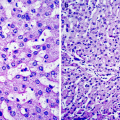and LI Ning2
(1)
Radiology Department, Capital Medical University Beijing You’an Hospital, Beijing, China, People’s Republic
(2)
Capital Medical University Beijing You’an Hospital, Beijing, China, People’s Republic
Abstract
The incubation period after infection of Influenza A(H1N1) is usually 1–7 days, being longer than common influenza and bird flu.
5.1 Clinical Manifestations
5.1.1 Incubation Period
The incubation period after infection of Influenza A (H1N1) is usually 1–7 days, being longer than common influenza and bird flu.
5.1.2 Clinical Characteristics
After the infection of Influenza A (H1N1) virus, the clinical symptoms range from no fever and mild symptoms of upper respiratory infection to severe or fatal pneumonia. Most patients suffering from Influenza A (H1N1) have typical flu-like symptoms, being capable of spontaneous recovery. The most common symptoms include coughing, fever, sore throat, headache and upset. Some out-patients may not be found feverish, and about 38 % American out-patients have gastrointestinal symptoms, including nausea, vomiting and/or diarrhea.
About 2–5 % definitely diagnosed patients in the US and Canada and 6 % in Mexico were hospitalized for treatment. Among Mexican patients with acute respiratory infections, 13 % were tested positive for Influenza A (H1N1) virus and 20 % were diagnosed as having seasonal influenza. In the patients diagnosed as having Influenza A (H1N1) in Mexico, 10 % were hospitalized and 1/3 hospitalized patients received mechanical ventilation.
Almost half of the hospitalized patients in the US and 46 % Mexican death cases were found underlying conditions including pregnancy, asthma, other pulmonary diseases, diabetes, obesity, autoimmune diseases treated with immunosuppressive therapy, neurological diseases and cardiovascular diseases. Among 30 hospitalized patients in California of the US, 64 % had background diseases.
Among 45 death cases in Mexico, 54 % were healthy, mostly aged 20–59 years [1, 2]. Adults had a higher mortality rate than children and teenagers. Death usually occurred due to the rapid development of respiratory conditions. In Mexico, the period from the onset of disease to hospitalization was averagely 6 days (ranging from 1 to 20 days), but a mean of 4 days in the US. The clinical manifestations of the death cases were fever, tachypnea, myalgia, tachycardia, low oxygen saturation and occasional hypotension and cyanosis. The severe cases had cardiac arrest in a short period after hospitalization.
In Mexico, chest X-ray of patients with severe pneumonia demonstrated multifocal infiltration. The condition might rapidly develop into acute respiratory distress syndrome (ARDS), renal or multiple-organ failure [3–6]. The median period from the onset of the disease to death was about 10 days, ranging from 2 to 23 days. Among the hospitalized patients in California, 60 % (15/25) were radiologically diagnosed as having pneumonia.
The hospitalized patients had both increase and decrease of white cell counts. In Mexico, many hospitalized patients were found to have decreased lymph cells, increased transaminase and lactate dehydrogenase levels. Some were found to have very high level of creatinine. Half of the hospitalized patients had renal dysfunction of different severity, which might be secondary to rhabdomyolysis and myoglobinuria.
Stay updated, free articles. Join our Telegram channel

Full access? Get Clinical Tree




